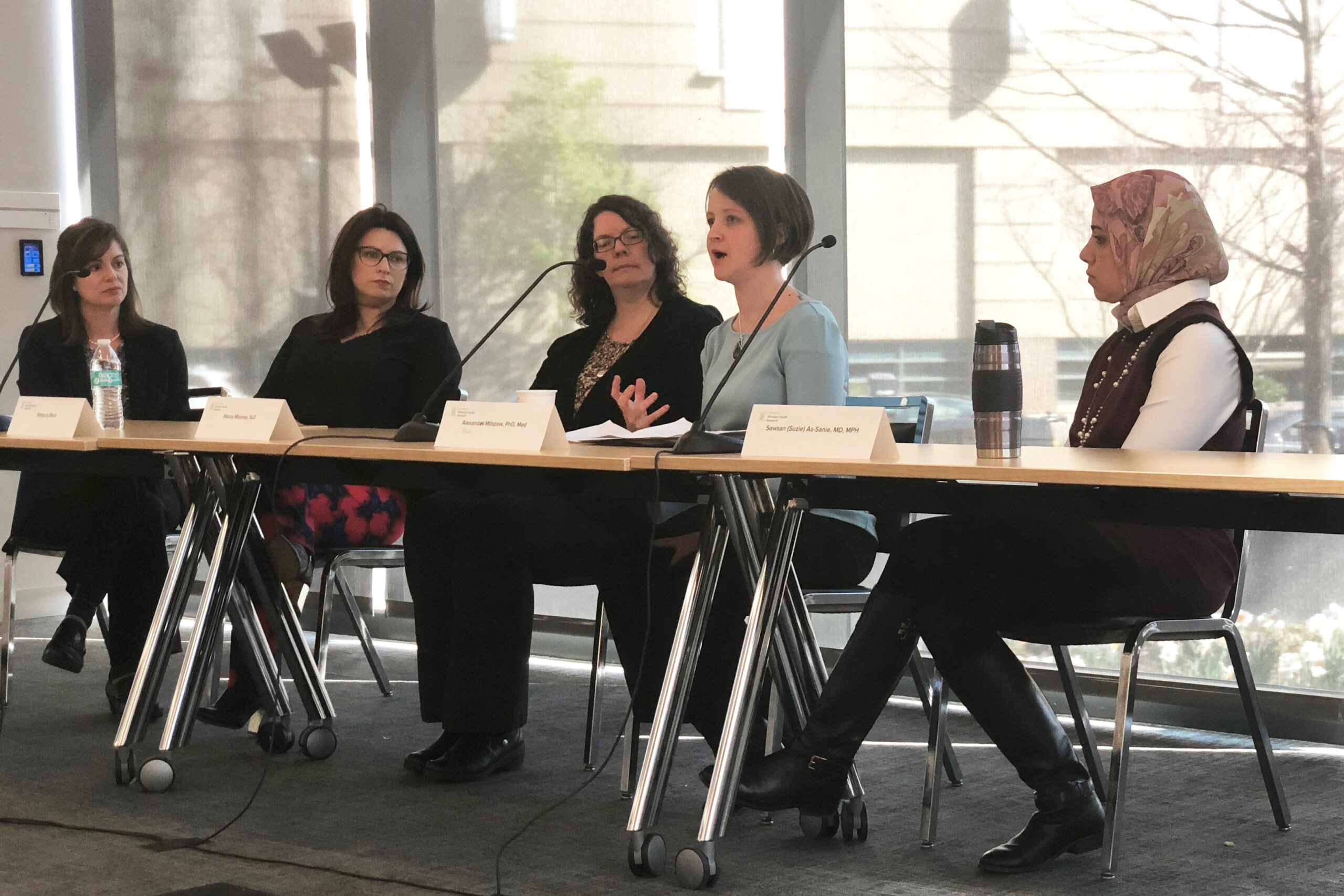Endometriosis has completely disrupted Rebecca Black’s life — and the lives of millions of other women. Visiting doctor after doctor, suffering infertility problems, and dealing with excruciating pain, Black and many other women are forced to become full-time patients to deal with their endometriosis, putting their sole focus and limited energy on getting better.
This chronic, often-painful condition — which occurs when tissue similar to what lines the inside of the uterus grows elsewhere in the body — affects about 10 percent of reproductive-age women, an estimated 176 million worldwide.
While endometriosis is one of the most common gynecological conditions, there is lack of awareness about the disease and its exact causes are still unknown. “Women have suffered for decades without a focus on this condition,” said Sawsan “Suzie” As-Sanie, MD, MPH, director of the University of Michigan Endometriosis Center.
On April 10, the Society for Women’s Health Research (SWHR) brought together a group of patients, clinicians, researchers and other relevant stakeholders for a daylong roundtable meeting to identify unmet needs and knowledge gaps in endometriosis. Following that session, SWHR hosted a public panel discussion at the George Washington University Milken School of Public Health to raise awareness about the disease and bring attention to issues related to a woman’s diagnosis, treatment and access to care.
During the panel discussion, Black shared her diagnosis and treatment journey. Many women aren’t diagnosed until their 30s or 40s. That’s what happened to Black — she went off birth control in order to have children, but then struggled with infertility, leading her to a series of health care visits where she was ultimately diagnosed with endometriosis. Infertility is very common in women with endometriosis, with one study reporting that 90% of women with endometriosis who tried to conceive experienced difficulties.
Endometriosis is also associated with risk for other chronic diseases, including several types of cancer, autoimmune diseases, asthma, and cardiovascular disease. Total productivity loss in employed women with endometriosis averages 6.3 hours per week, with the majority of lost productivity due to presenteeism, and the yearly total cost of endometriosis has been estimated at $22 billion in the United States.
Black said she visited more than 20 doctors in her quest to get properly diagnosed and treated. “I just started making appointments with any doctors I thought would listen to me,” she said. “I was a full-time patient trying to figure out what was wrong with me.”
On average, women with endometriosis see seven health care professional professionals before seeing a specialist, with a typical delay in diagnosis of nearly seven years. About three-quarters of women experience a misdiagnosis.
One reason for diagnostic delays is the normalization of period pain by women and their doctors, said Stacey Missmer, ScD, scientific director at the Boston Center for Endometriosis and professor of obstetrics, gynecology and reproductive biology at Michigan State University. She said more education on endometriosis is needed to remove the stigma and isolation these women feel.
Alexandra Milspaw, PhD, a licensed professional counselor and founder of 4Directions Counseling, stressed the importance of women being able to talk openly with their health care providers about topics such as painful sex and painful periods, two of the most common symptoms of endometriosis.
Another challenge is that endometriosis can only be definitely diagnosed with surgery, As-Sanie said. The treatment options are also limited — pain medications, hormone therapy, or surgery — and they only address the symptoms of endometriosis because there is currently no cure. After years of suffering, Black had surgery to remove her endometrial lesions last year. But even the surgical treatment doesn’t necessarily guarantee definitive relief. “I know they could come back,” Black said.
As-Sanie and Missmer emphasized the need for more research into the underlying biology of endometriosis and noninvasive diagnostic tools and treatments. Despite the pervasiveness and extensive negative impact endometriosis has on individuals and society as a whole, endometriosis research only received $10 million in funding in NIH’s $32.3 billion budget in fiscal year 2016. NIH’s National Institute of Child Health and Human Development (NICHD) is the primary source of funding for endometriosis research.
In addition to more research funding, increased awareness and collaboration among health care professionals is critical for women to receive effective care. Milspaw said collaboration among gynecologists, surgeons, mental health professionals and other specialists is necessary to “connect the dots” in treating and managing endometriosis.
What can women with endometriosis do to further this work? Missmer requests that they share their experiences. “When we collect that information, it makes a huge difference into what we are able to discover,” she said.
Missmer expressed optimism at the direction the field is going: “I’ve never seen so much attention on endometriosis,” she said. “It’s going to be an exceptional next few years.”
Panel moderator and SWHR President and CEO Amy M. Miller, PhD, said SWHR looks forward to continuing its programmatic work on endometriosis and drawing attention to this and other conditions that exclusively affect women.
SWHR is grateful to AbbVie for supporting the interdisciplinary roundtable and public panel on endometriosis.
Endometriosis: Shattering Misconceptions, Shaping the Future
